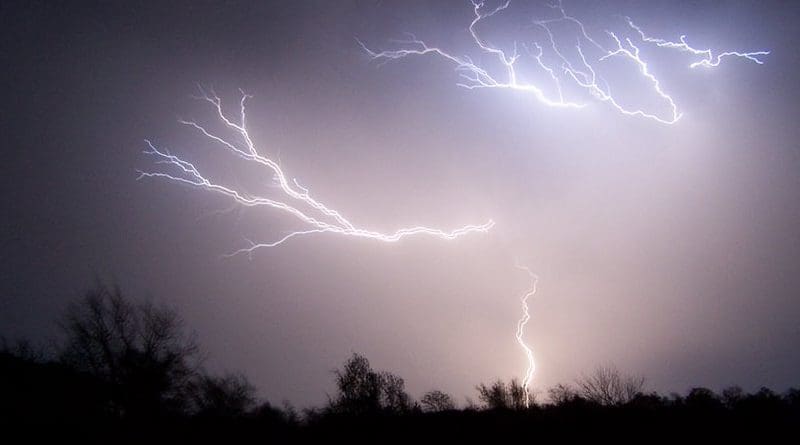Stage Set For A Strong El Niño In Late 2023
A team of researchers, using a state-of-the-art climate prediction system, is forecasting a strong El Niño toward the end of 2023. If westerly wind bursts were to occur during the spring and early summer, an even stronger El Niño event might occur.
Their study is published in the journal Ocean-Land-Atmosphere Research.
“The upper ocean heat content in the winter of 2022 ranks the largest over the past 40 years. Since the heat content serves as a primary precursor for an upcoming El Niño, we showed by a set of model experiments that within the low-frequency atmosphere-ocean coupling, the current heat content is sufficient for boosting a strong El Niño toward the end of 2023,” said Tao Lian, a professor from the Second Institute of Oceanography, Ministry of Natural Resources, China.
The El Niño–Southern Oscillation cycle is the name scientists give to the strong, recurring climate pattern over the tropical Pacific Ocean. It has widespread impact on the global climate and human society. Scientists have long recognized that the occurrence of an El Niño is often preceded by the buildup of the upper ocean heat content in the equatorial western Pacific about six to nine months ahead of the El Niño.
Because of the regular recharge and discharge of the upper ocean heat content, scientists are able to predict the El Niño using dynamic models, far in advance of the El Niño’s arrival. However, disturbances, known as atmospheric high-frequency perturbations and initial errors, can cause uncertainty in the real-time forecasts. The research team noticed that the buildup of the ocean’s heat content seems ripe for the development of a strong El Niño in late 2023. To confirm its potential impact on the ongoing El Niño , they evaluated the effects of both heat content and high-frequency perturbations, along with the uncertainty in initial conditions, using data analysis and a series of real-time forecast experiments.
The previous La Niña ended around March 2023. It was an unusually long cold event that lasted from the winter of 2020 to the spring of 2023. The team examined the thermocline depth data for late 2022 to early 2023. Thermocline is the transition layer between the warmer waters near the ocean surface and the cooler deep waters. When the thermocline depth is greater than normal in the western Pacific, it is likely that an El Niño will occur in the coming year. They compared this recent data with thermocline data from 1982, 1997, and 2015. Those years displayed deeper-than normal thermocline preceding the start of three extreme El Niño events.
The team also conducted forecast experiments using a state-of-the-art El Niño–Southern Oscillation ensemble prediction system. The predictions point to a moderate strength El Niño coming in late 2023. Next the team reduced the uncertainty in the predictions by filtering out some of the weather influences from outside the tropical Pacific. With this more refined data, the team views the stage being set for a stronger El Niño coming in late 2023.
In addition to examining the ocean’s heat content, the team also looked at high-frequency perturbations, namely westerly wind bursts and easterly wind surges, both of which have strong influences on the El Niño. These disturbances are capable of increasing or decreasing the intensity of the El Niño. Yet the ocean’s heat content buildup alone seems to be sufficient for boosting a strong El Niño in late 2023. “A strong El Niño is upcoming, and this daring prediction is not sensitive to initial errors within the tropical Pacific,” said Lian.
Looking ahead, the team hopes to continue refining their prediction. “The high-frequency perturbations in spring and early summer play a crucial role in El Niño intensity and structure. We hope that we can further improve El Niño–Southern Oscillation prediction skill via combining the seasonal forecast model of the high-frequency perturbations with the El Niño–Southern Oscillation prediction system,” said Dake Chen from the Second Institute of Oceanography, Ministry of Natural Resources, China.

